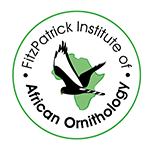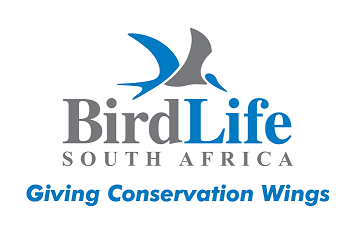About us
Large and conspicuous birds offer the opportunity to monitor their populations by means of relatively simple techniques. One of these techniques is the "road count", in which observations are made from vehicles covering fixed routes. It is these large birds that are showing signs of threat due to loss of habitat through changes in land use, increases in crop agriculture and human population densities, poisoning as well as man-made structures like power lines. As more wind and solar facilities are developed to increase our renewable energy capacity, monitoring of these species is critical.
CAR spread rapidly to other provinces and now monitors 36 species of large terrestrial birds, 12 raptors and vultures and 3 corvid species along 340 fixed routes covering over 19 000 km (the flight distance between Cape Town, London and back!). Eighteen of the terrestrial species and seven raptor species are listed in the Red Data Book of Birds .
Twice a year, in midsummer (the last Saturday in January) and midwinter (the last Saturday in July), roadcounts are carried out using this standardised method. A standardised method allows one to make comparisons between counts. Even though we do not attempt to count the entire population of a species, the area covered is so large that CAR is statistically capable of demonstrating trends in population size. The project also reveals details of habitat use and the relationship of populations to the agricultural practices of an area.
Routes have been grouped into clusters called precincts. Local Precinct Organisers play a vital role in organising counts in their areas. Currently there are 46 precincts in eight provinces. CAR has thrived on the enthusiastic, voluntary participation of members of bird clubs and farming communities, conservators, schools and interested members of the public. Every six months, over 750 people travel along bumpy country roads, making this one of the largest birder-participation projects in Africa. CAR is supported by Tania Anderson at the FitzPatrick Institute of African Ornithology, University of Cape Town. Cape Town.
Many of the routes are covered by farmers, thereby fulfilling a major objective in encouraging conservation and bird-friendly land-management practices on private lands. Most large terrestrial birds have huge ranges and are not adequately conserved within protected areas. Farmers manage the majority of South Africa’s land, fully 80% of it. It stands to reason that if conservation does not happen on 80% of the land, it cannot succeed in the country as a whole. The farmer is a vital custodian and steward of our natural wealth and heritage, and we South Africans live in the country that is ranked as the world’s third richest in wildlife! The contribution that farmers and people who work on farms can make to the conservation of these birds and other animal and plant species is enormous.
In 2003, the Animal Demography Unit, University of Cape Town, published a major 200-page report, Big birds on farms: Mazda CAR Report 1993-2001, sponsored by the Mazda Wildlife Fund, summarising the information collected over the first eight years. There are accounts for 15 species and 17 precincts, as well as a summary chapter and information about organisations that are helpful to landowners. The report provides advice on how to promote the conservation of these magnificent birds on farmlands.
In 2007, through involvement in Cape Action for People and the Environment, CAR received funding from the Critical Ecosystem Partnership Fund (CEPF) for a project, Big Birds on Farms, focusing on the Cape Floristic region (CFR). This project has taken CAR a step further enabling increased consultation with landowners, the agricultural sector, conservationists and colleagues and the further development of practical measures that farmers can take leading towards the conservation of biodiversity. An illustrated booklet for landowners was published, containing three sections: (1) twelve points of general advice on conservation-friendly land management, called the "Desirable Dozen" and (2) species accounts for eight species of large terrestrial birds, giving interesting information about each species and specific tips on how to manage for their benefit (statistical information for each species is taken from the results of the CAR project), and (3) a list of contacts and references that will be useful for more information and for assistance with farming sustainably. We are most grateful for funding from Land care, The McDowell Trust for the Protection & Conservation of Fauna and Flora and JAH Environmental Consultancy that enabled the publication of this booklet.


In summary, the "Desirable Dozen" best practices are given to guide landowners in their conservation actions for the stewardship of biodiversity:
- Adopt mixed farming strategies. CAR shows that large terrestrial birds do better in areas of mixed farming than where there is intensive cultivation of a single crop.
- Use poisons responsibly. The responsible use of agro-chemicals is absolutely essential for large terrestrial birds and other animals to flourish on farms.
- Monitor overhead cables and other dangerous structures. For example, those cables which kill birds regularly can be marked, it is therefore important to report collisions. A few stones placed in a drinking trough allows crane chicks or other small animals to clamber out without drowning.
- Protect natural veld. Large terrestrial birds roam across vast tracts of land, and there will never be enough protected areas to conserve them effectively. Landowners play a vital role in filling gaps and complementing formal nature conservation efforts. The conservation of natural veld can make a huge contribution to conserving biodiversity on farms.
- Create ecological corridors. The value of patches of natural veld is greatly enhanced if they are interconnected by corridors. Landowners can do this along watercourses and ridges and alongside roads. At least 50 m is the target width.
- Protect wetlands. Water is an important resource in a dry country like South Africa and the conservation of wetlands improves the quality of the water. Cranes in particular depend on shallow, vegetated wetlands that are unpolluted and not excessively disturbed by livestock or fire. Landowners should value wetlands and their fringing habitats as special assets to be carefully conserved, not only for their biodiversity, but also for their services in regulating natural drainage and improving water quality.
- Protect watercourses and floodplains. Watercourses convey water across the landscape and even the smallest watercourses have great ecological value. The watercourses and vegetation alongside them form important ecological corridors and provide protection against flash floods and erosion.
- Protect breeding and roosting sites. Places for animals to rest and breed are just as important as foraging habitats. Ground-nesting birds, especially large species, are particularly at risk while breeding. The young birds are exceptionally vulnerable in the weeks before they can fly. Try to eliminate disturbance by people, by dogs and cats, and prevent trampling by livestock.
- Manage fire appropriately. It is important to become familiar with the burning regimes recommended for the veld types on your farm. Excessive burning causes a loss in biodiversity. It is highly recommended that landowners join their local Fire Protection Association.
- Control dogs, cats and livestock. Uncontrolled dogs and cats have a huge negative impact on birds - and many other creatures.
- Increase awareness of farm personnel. These are the people who most frequently encounter wildlife on farms, and who have the potential to make or break conservation effectiveness. Two examples: workers should be trained to remove all pieces of baling twine from fields, so that entanglement with the legs of cranes and other animals can be eliminated; workers should be trained in the responsible use of poisons, both for their own health and safety, and to prevent bird poisoning incidents.
- Collaborate with others. The good done on one farm can too easily be undone by the neighbours. CAR results demonstrate the benefits of several farmers forming a conservancy to promote sound conservation practice on a number of neighbouring farms. Collaborate with experts to improve conservation strategies.


The value of the CAR data
- Sally Hofmeyr undertook a PhD based on CAR data titled Impacts of environmental change on large terrestrial bird species in South Africa: insights from citizen science data looking at the trends of selected species and the impacts of environmental change.
- Christie Craig’s PhD used the CAR data to describe trends in the Blue Crane population, detecting a 19% decline in the species at a national level between 2010 and 2019. Prior to this, the population was increasing, the CAR data has been instrumental in detecting a decline for this species.
- Hofmeyr, S.D., Symes, C.T. and Underhill, L.G. 2014. Secretarybird Sagittarius serpentarius population trends and ecology: insights from South African citizen science data. PLoS ONE 9(5): e96772. doi:10.1371/journal.pone.0096772.
- CAR was extremely useful for the Regional Red Listing project undertaken by BirdLife South Africa during 2022-2025. Actual counts can be used to determine or confirm population trends. For instance, using this data supported SABAP2 data which pointed to no recent changes in the population. It also confirmed the stable or increasing population of Southern Bald Ibis. On the other hand, it highlighted declines of several species, such as Ludwig’s Bustard and Blue Korhaan.
- CAR has contributed to Environmental Impact Assessments of developments such as wind and solar facilities, roads and new powerlines, as well as changes in land use.
- CAR increases awareness of large terrestrial birds and their needs, especially amongst rural landowners. CAR also contributes information to monitoring of Key Biodiversity Areas, Endangered Wildlife Trust’s (EWT) African Crane Conservation Programme, the Eskom-EWT Strategic Partnership, the Threatened Grassland Species Programme, the Ground Hornbill Working Group and BirdLife South Africa’s Bustard Working Group and the Southern Bald Ibis Programme. In KwaZulu-Natal and Mpumalanga, where there is concern about game bird populations, observers also include game birds in their counts.
- The Black Harrier, a low-flying endemic raptor that is easily seen while scanning for large terrestrial birds, is also included nationally in CAR counts to assist the Western Cape Raptor Research Programme at the FitzPatrick Institute, UCT.
- The inclusion of Oribi in CAR counts in KwaZulu-Natal, Mpumalanga and Eastern Cape contributes to research conducted by Ezemvelo KZN Wildlife and Endangered Wildlife Trust's Threatened Grassland Species Programme on this threatened species.
- CAR works closely with the African Crane Conservation Programme of the Endangered Wildlife Trust and with the Overberg Crane Group. We value the support of many bird clubs, and especially the small clubs in country towns. In addition, many nature conservationists, in particular Brian Colahan previously with the Free State Department of Economic, Small Business Development, Tourism & Environmental Affairs, Craig Whittington-Jones, of the Gauteng Department of Agriculture and Rural Development, as well as members of Cape Nature and Ezemvelo KZN Wildlife do a tremendous amount of work in support of CAR.

 Login
Login


